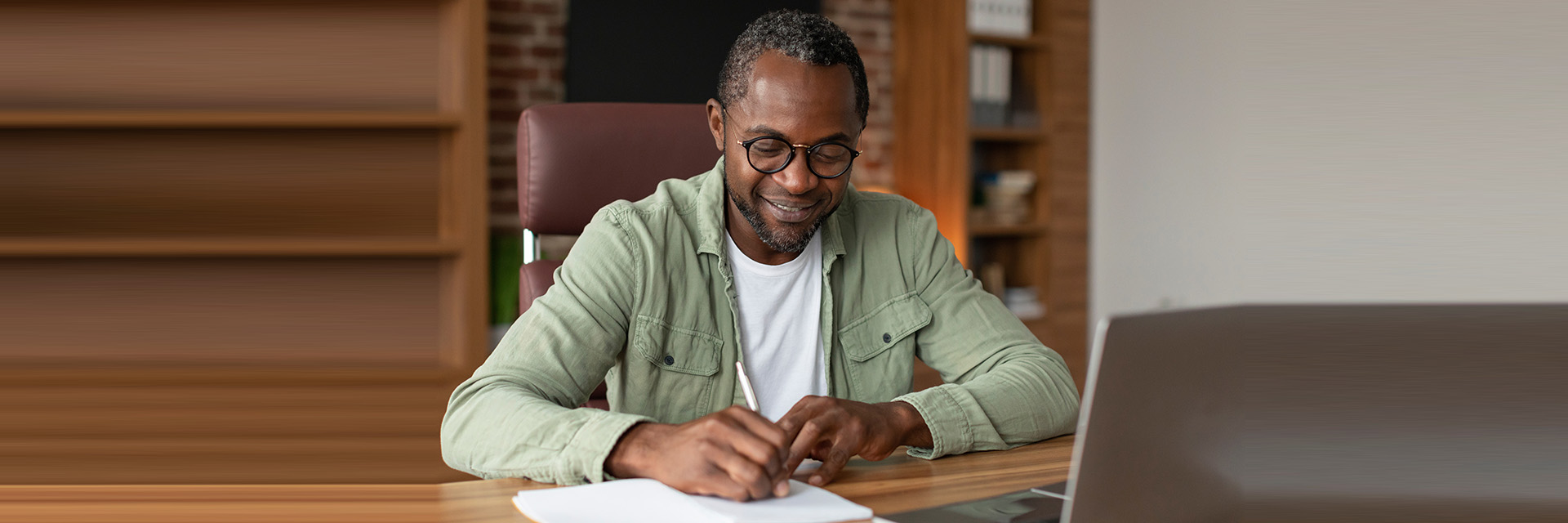Your back is an amazing structure that supports everything you do, from lifting and twisting to bending and arching. One thing it’s not meant to do, however, is stay in a sitting position for long.
Like the rest of your body, the spine needs movement to stay healthy. Sitting for long periods can put significant pressure on your spine and strain your back muscles, leading to back pain and other issues. Kenneth Bode, M.D., an orthopedic spine surgeon on the medical staff at Texas Health Harris Methodist Hospital Southwest Fort Worth and at Texas Health Orthopedic Specialists, a Texas Health Physicians Group practice, has seen his share of patients with back trouble caused by sedentary lifestyles. “People who often sit at work or travel for business are especially prone to back problems, and a lot of it has to do with posture,” he says.

Practicing good posture while sitting helps you avoid an aching back, neck, and shoulders. However, it can take work to maintain good form consistently, which is why problems often occur. Even if your back pain isn’t caused by poor posture, it can be made worse by slouching or arching your back over time.
“Sitting in one position too long simply isn’t healthy,” Bode says. “Placing your back rounded forward, slumped to one side, or leaning too far back adds to the negative effects. When you put stress on parts of your spine for an extended period, you may experience pain as well as other issues. Each spinal level has a disc and two small joints with muscles and ligaments that can also be strained.”
According to Bode, some common conditions related to too much sitting include:
Strained Muscles
Sitting can cause your neck to strain and become arched, which, in turn, strains the muscles that connect to the shoulder and the upper back to hold the neck up and in place. Pretty soon, the whole back starts to arch forward because the muscles are strained and weakened. “Over time the muscles become tender, painful, and stiff, and you develop those classic ‘knots.’ The lower back also bears some of the strain, leading to lower back pain. Imagine making a muscle with your biceps for a few minutes. That muscle will begin to ache from the stress; the same thing happens in your back,” he explains.
Herniated Discs
When a disc in the vertebrae of the spine bulges or even herniates with age, the muscles around it start to tighten to hold everything in place and prevent further damage. This isn’t much of a problem until you need to move, at which point your tight muscles are likely to resist and cause pain even after the disc displacement settles.
Pinched Nerves
A weak core combined with poor posture can put pressure on the discs in the spine, which can, in turn, stress the nerves that run from your lower back down your leg. “Prolonged sitting is one way sciatica can develop or worsen,” Bode says.
Lower Back Mobility Issues
Being in one position, say at a desk, in front of a screen or behind the wheel of a car, for more than four hours a day can reduce your spine’s mobility. If you also begin to slouch, you may overstretch the ligaments in your spine and strain your spinal joints. “If you don’t use it, you lose it,” Bode says, alluding to the deconditioning that occurs by not using your spinal muscles. As a result, you may experience more pain as the muscles turn to fat along with discomfort and weakness in your lower back muscles.
Take a Stand Against Back Pain
If you have a job that requires you to be seated for any length of time, how can you help ensure you don’t fall victim to back problems? According to Bode, keeping your spine healthy may be as simple as standing rather than sitting when you can.
Some lifestyle changes he recommends include:
- Taking a break from sitting every 30 minutes
- When you get up, doing some stretches to keep your back flexible (like marching in place and rotating your torso)
- Standing while talking on the phone or watching television
- If you work at a desk, implementing a standing desk with a mat — or improvising with a high table or counter
- Walking with your colleagues for meetings rather than sitting in a conference room
(participating in standing meetings has the beneficial side effect of keeping everyone engaged and may shorten the meeting)
Less sitting and more upright movement contribute to better back and overall health. While it may be tempting to rest your overworked or overstretched back by sitting rather than standing, in many cases, it’s not sitting properly that leads to problems.
Measures like being mindful of how you sit, implementing some basic tips, and seeing a spine specialist when you experience a severe or persistent problem will go a long way toward keeping your back in its best possible shape,” Bode adds.
To better understand back pain, take our quick Back Health Assessment or visit YourBackHealth.com to find a back and spine specialist.
Additional Source:
https://my.clevelandclinic.org/health/articles/posture

